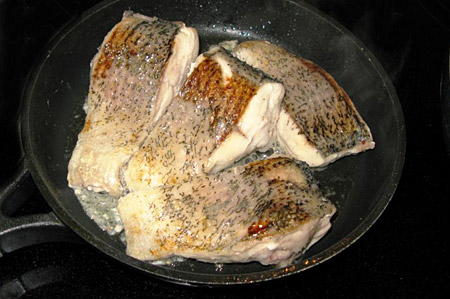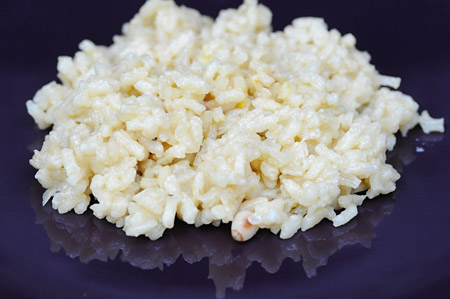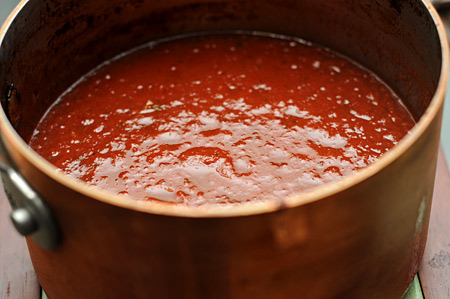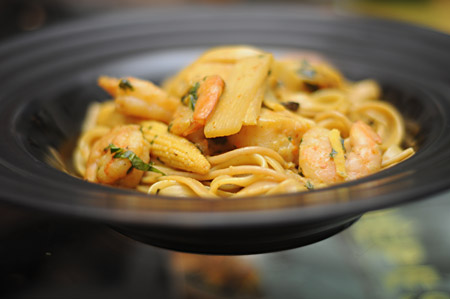After a few days of hanging out and enjoying sightseeing, great beers and fantastic Bavarian food in Munich, Germany, we drove a few hours to Austria’s Gastein valley to the small ski town of Bad Hofgastein, about 30 miles away from Saltzburg. We were staying in a beautiful 4 star hotel, the St.Georg, with a hospitable and extremely creative restaurant run by the Hartl family. I could tell the food was going to be great from my first bite of fresh baked, hot bread with butter while waiting for my wine (Austrian Zweigelt!) and main course to show up. After my dinner, I asked if the chef would be kind enough to answer a few questions and chat about Austrian food with me for this blog post. And… the chef agreed!!!
Wolfgang Hartl has been working as a chef in his father’s restaurant for over 11 years now; and runs, together with his father, a small but very inventive kitchen staffed with 6 cooks and a few helpers. Prior to joining his father’s venture, he worked in a 5 star restaurant in Tirol, Austria as a chef patissor (pastry-chef) and other restaurants in Europe, as well as a private residence in Santa Monica, California.

Wolfgang Hartl
He has a solid knowledge of Austrian cuisine and loves cooking all kinds of foods – Italian, Mediterranean, classic European, amazing seafood dishes and even sushi – all of which ended up being an appetizer buffet on our second day! The large buffer table was full of sushi trays, shrimp and seafood in oil and herbs, fantastic langoustine (cray) fish tails with fresh herbs, tuna carpaccio, smoked salmon, and zucchini and round red peppers stuffed with cheese . I must admit – I was full after the appetizer course! The international, all organic meats and vegetables menu in St. Georg restaurant is very creative and is rotated every day by Wolfgang and his father. Wolfgang believes that trying new things and creativity is vital to cooking – he creates various dishes, rooted in an array of cultures and from various ingredients, improvising and discovering new twists every day.
One of the reasons I wanted to talk to the chef was to find out more about Austrian food.
Wolfgang describes Austrian food as quite heavy, using a lot of pork, potatoes, breadcrumbs and cream sauces – much alike to German food. When asked to name a few traditional dishes that are not a cliché schnitzel and noodles or well-known apple strudel, Wolfgang mentioned “Jafelstuk” – a meal of boiled meat, potatoes and creamed spinach, and “Kaiserschmarrn” – a baked layered desert with plums. I asked Wolfgang to think of a soup that is very typical to Austria, (as soups are one of my favorite things to cook) and he mentioned “Fritattensuppe” – a simple consommé with crepe-like pancakes cut on top of it.
When asked what kind of food does he love to eat, Wolfgang mentioned seafood with pasta, lobster and sushi. He loves simple home-style restaurants where the culture and traditions of food are authentic and represent real people.
Here is a traditional recipe Wolfgang shared with me for this entry:
Kaiserschmarrn with Zwetschgenroster (plum sauce)
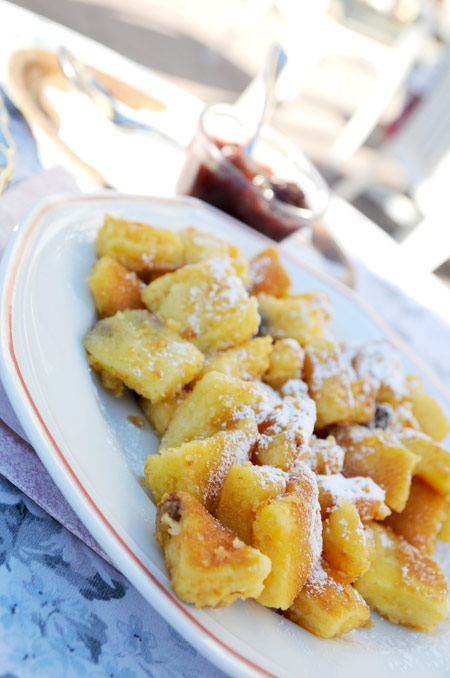
Kaiserschmarrn - Austrian pancake desert with plum sauce
Zwetschgenroster (plum sauce) Kaiserschmarrn
2 lb of plums 1/3 lb flour
¼ lb sugar 4 egg yolks
4 tbsp Austrian rum 2 tbsp butter
½ vanilla pod 5 tbsp milk
½ stick cinnamon 4 egg whites
handful of raisins
2 tbsp Austrian rum
Sugar & butter for caramelizing
Kaiserschmarrn:
Mix flour and egg yolks until smooth, add melted butter and milk. Whip egg whites and sugar until stiff and fold (like souffle) into the batter mixture.
Step 1: Pour creamy mixture to a depth of 1 and ¼ inch into a very hot fry pan, place briefly on a stove, and then bake in the oven for around 4-5 minutes on 425 degrees. Kaiserschmarrn rises better this way.
Step 2: Halve the Kaiserschmarrn, turn and place onto stovetop once more. Keep adding butter and sugar so that it does not stick and a caramel sugar crust forms.
Step 3: When golden brown on both sides, cut the Kaiserschmarrn into squares, add raisins in rum and keep adding butter and sugar as in Step 2.
Decorate with connectionist sugar.
Zwetschgenroster:
Wash, halve and stone the plums. Add the remaining ingredients and spices and stew over a very low heat until the sauce is formed.
Tips: Add a few tablespoons of schnapps to the sauce before serving to round off the flavor.

